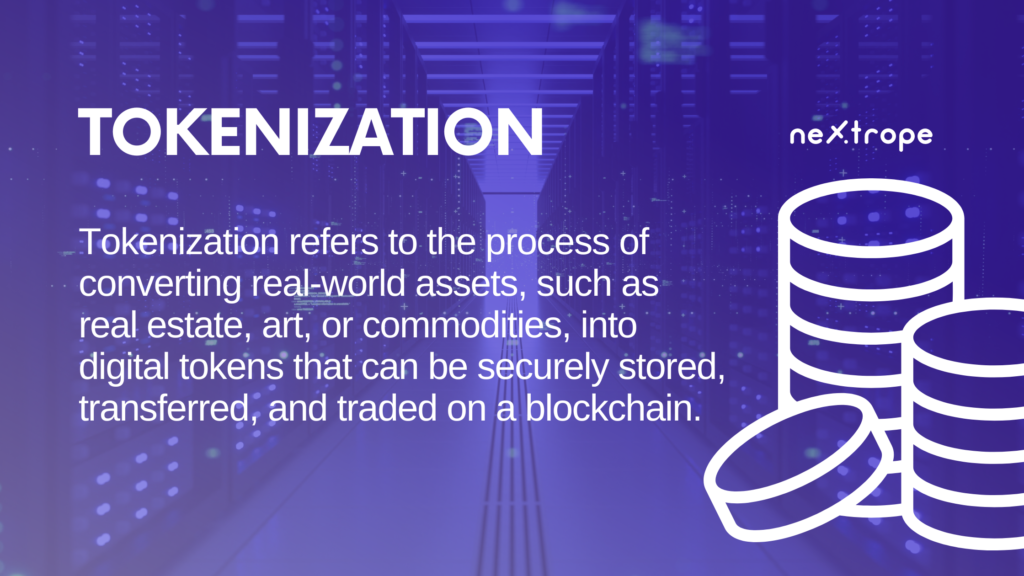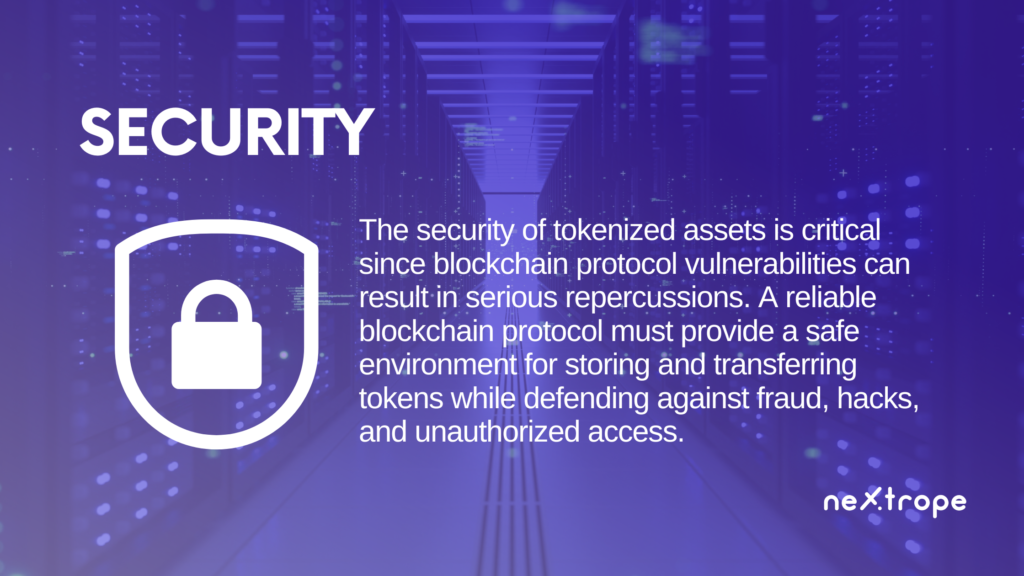The rise of blockchain technology has paved the way for numerous innovations across industries. One such innovation is tokenization, a process that allows assets, both tangible and intangible, to be represented as digital tokens on a blockchain. This breakthrough has opened up exciting possibilities for enhanced liquidity, fractional ownership, and efficient asset management. However, the success of any tokenization project hinges on selecting the right blockchain protocol. With numerous protocols available, each with its own unique features and capabilities, making an informed decision is crucial. In this article, we will delve into the factors that should be considered when choosing the right blockchain protocol for your tokenization project.
Understanding Tokenization and Blockchain Protocols
Tokenization refers to the process of converting real-world assets, such as real estate, art, or commodities, into digital tokens that can be securely stored, transferred, and traded on a blockchain. By representing these assets as tokens, individuals and organizations can unlock new possibilities, including fractional ownership, increased liquidity, and automated compliance.

Blockchain protocols, on the other hand, form the underlying infrastructure that powers tokenization projects. These protocols serve as the foundation for creating, managing, and exchanging tokens securely and transparently. They provide the necessary consensus mechanisms, smart contract functionality, and interoperability features to ensure the smooth operation of tokenized assets.
When considering blockchain protocols for your tokenization project, it is crucial to evaluate several key factors. Scalability and throughput, security and consensus mechanism, smart contract functionality and flexibility, interoperability and integration, and community and ecosystem support are among the critical aspects to consider. By carefully assessing these factors, you can make an informed decision that aligns with the specific requirements and goals of your tokenization project.
In the following sections, we will explore each of these factors in more detail, providing valuable insights to help you navigate the complex landscape of blockchain protocols and choose the right one for your tokenization project.
Key Aspects to Evaluate When Selecting a Blockchain Protocol for Tokenization
The importance of choosing the appropriate blockchain protocol for a tokenization initiative cannot be overstated, as it influences the project’s success and efficacy. By taking into account the following key elements, you can make an informed decision that aligns with your goals.
Scalability and Throughput
Scalability is vital in tokenization endeavors because it directly affects the blockchain’s transaction speed and capacity. It is crucial to select a highly scalable blockchain protocol to accommodate numerous tokenized assets and guarantee seamless and efficient processes. Assess transaction processing rates, network capabilities, and the ability to manage increasing transaction volumes when comparing blockchain protocols. Opt for protocols that adopt inventive solutions addressing scalability issues, such as sharding, layer 2 solutions, or sidechains. Selecting a scalable blockchain protocol will safeguard your tokenization project from potential limitations and performance problems as it grows.
Security and Consensus Mechanism

The security of tokenized assets is critical since blockchain protocol vulnerabilities can result in serious repercussions. A reliable blockchain protocol must provide a safe environment for storing and transferring tokens while defending against fraud, hacks, and unauthorized access. Key security factors to consider include the protocol’s history of security incidents, decentralization level, blockchain immutability, and the strength of cryptographic algorithms employed. Furthermore, examine the protocol’s consensus mechanism since it dictates how transactions are verified and added to the blockchain. Different consensus mechanisms offer varying levels of security and energy efficiency; hence it is essential to choose one that aligns with your tokenization project’s requirements.
Smart Contract Functionality and Flexibility
Smart contracts are crucial to tokenization projects as they facilitate programmable agreements for tokenized assets’ creation and execution. Evaluate the smart contract features and programming languages supported by different blockchain protocols. Opt for protocols that provide versatile functionalities including custom logic creation, integration with external systems and data sources, and complex tokenization requirements management. This smart contract framework flexibility will allow customization to your project’s unique needs, ensuring seamless tokenized asset operations. Also, assess the protocol’s compatibility with existing smart contract standards and libraries to streamline development and improve interoperability with other projects.
More about smart contracts
Interoperability and Integration
Tokenization initiatives may necessitate interoperability with other blockchain protocols or systems to utilize additional functionalities or access broader liquidity sources. Appraising the interoperability capabilities of various blockchain protocols is essential if you intend to integrate with external platforms, exchange tokens across diverse blockchains, or cooperate with other projects. Choose protocols that support cross-chain communication, atomic swaps, or bridge technologies for facilitating interoperability. Moreover, consider the protocol’s compatibility with widely embraced interoperability standards and initiatives like Polkadot, Cosmos, or Inter-Blockchain Communication (IBC) protocols. Ensuring seamless integration and interaction enables smooth data exchange between your tokenization project and other pertinent systems, expanding possibilities and augmenting the overall value proposition.
More about Interoperability
Community and Ecosystem Support
The blockchain community’s strength and dynamics substantially influence your tokenization project’s success. Gauge the level of activity and involvement within the developer community surrounding different blockchain protocols, as an engaged community can offer valuable insights, resources, and support throughout development. Seek protocols with a flourishing developer community, regular updates, and a transparent governance structure that fosters community participation. In addition, evaluate the partnerships and projects established on the protocol as they signify technological maturity and adoption levels. A robust ecosystem supplying tools, documentation, and assistance is essential for smooth tokenization project progress, enabling access to a wealth of expertise and fostering collaboration with other blockchain industry stakeholders.
When considering these crucial aspects in selecting a blockchain protocol for your tokenization undertaking, you can make an educated decision that addresses your project’s specific needs pertaining to scalability, security measures, smart contract functionality, interoperability aspirations, and community backing. Investing time in analyzing and understanding these factors will lay a solid foundation for your project, increasing the chances of realizing your desired outcomes.
Conclusion
Choosing the right blockchain protocol is a critical step in ensuring the success of your tokenization project. By carefully evaluating factors such as scalability and throughput, security and consensus mechanism, smart contract functionality and flexibility, interoperability and integration, and community and ecosystem support, you can make an informed decision that aligns with your project’s specific requirements and goals.
Scalability and throughput are crucial for handling transaction volumes and accommodating future growth. Security and the choice of consensus mechanism directly impact the safety and integrity of tokenized assets. Smart contract functionality and flexibility allow for tailored solutions and seamless execution of operations. Interoperability and integration capabilities enable collaboration with other blockchain platforms and systems, unlocking additional functionalities and liquidity pools. Lastly, a strong and supportive community and ecosystem contribute to the development and growth of your project, providing resources, expertise, and collaboration opportunities.
Tokenize Everything with Nextrope Launchpad
Our platform allows you to participate in the broad financial market of digital assets. Expand your reach and find investors globally.
Nextrope Launchpad Platform is a White Label solution in a Software-as-a-Service model that helps you launch your project within a month and fundraise with Initial Coin Offering (ICO) or Security Token Offering (STO).



